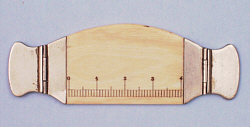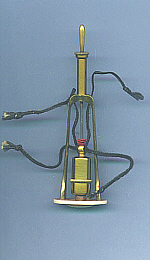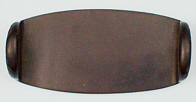

 |
| Traube's pleximeter made of ivory, marked with a scale and with silver hinges that bend up to allow the physician to hold the pleximeter in place on the patient, circa 1850. |
 |

|
| On the left is Curschman's Percussor with Ivorine | On the right is Seitz's Percussor with ebony handle. |

|
| Sibson's percussor-pleximeter, circa 1860. |
 |
 |
|
Flint's Pleximeter made of hard rubber on the left and Flint's Percussor with rubber head and hard rubber handle on the right, circa 1880. |
|